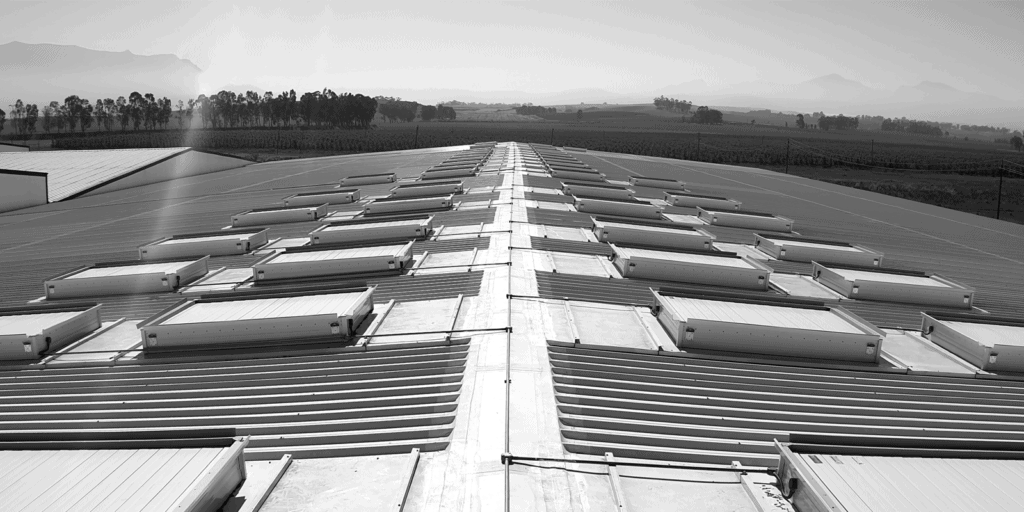Introduction
In the meticulous realm of manufacturing, safeguarding the premises against the potential ravages of fire and smoke is not merely about adhering to regulatory mandates but echoes a deeper ethos of safety and responsibility. Among the diverse range of fire safety assets, fire and smoke curtains emerge as pivotal components. These innovative solutions not only offer robust protection but also harmoniously blend with the architectural aesthetics, remaining discreetly concealed until called upon to serve their critical function. This piece aims to delve into the key considerations and standards enveloping fire and smoke curtains, elucidating their indispensable role in fortifying manufacturing environments.
Fire and Smoke Curtain Dynamics
Fire and smoke curtains are ingeniously designed to meld seamlessly into a building’s design, lying in wait to spring into action in the face of a fire emergency. Triggered by the facility’s fire alarm system, they descend from their concealed abodes to form formidable barriers against the advancing menace of fire and smoke, thus playing a vital role in safeguarding both assets and lives within the premises.
Pivotal Considerations in Specifying Fire Curtains
Embarking on the journey towards a fortified manufacturing environment begins with the astute selection of fire and smoke curtains. A myriad of products vie for attention in the market, each with distinctive features and specifications. The focus gravitates towards ensuring a continuous run of curtains capable of spanning the expansive areas typical of manufacturing facilities, with minimal reliance on steel work or side guides. While an array of products offer unlimited widths, standard offerings may limit the drop to 8 meters.
1. Compartmentation and Integrity
The essence of a fire curtain’s functionality is encapsulated in its ability to compartmentalize spaces, a feature denoted by the ‘E’ classification. This classification, expressed in minutes, denotes the duration for which the curtain can withstand the fiery onslaught, aiding in the containment of the blaze.
2. Insulating or Tenable Zones
In scenarios necessitating the protection of escape routes, crafting insulating or tenable zones is paramount. These zones, manifested by the descent of fire curtains, act as sanctuaries, allowing occupants to navigate past the curtain sans the peril of excessive radiant heat. The efficacy in curbing radiation is denoted by ‘EW’.
3. Classification and Ratings
A comprehensive classification encapsulating integrity, radiation, and insulation such as E120 EW60 serves as a testament to the curtain’s ability to offer steadfast protection against fire for specified durations.
4. Fail-Safe Mechanisms
To comply with fire safety legislation, fire and smoke curtain barriers must be protected from a short circuit or total power failure, epitomized by mechanisms like Coopers Fire’s Total Gravity Fail-Safe system.
5. Maintenance and Servicing
The post-installation phase calls for rigorous maintenance and servicing to ensure the curtains’ readiness to spring into action when calamity strikes. An annual servicing coupled with weekly testing alongside the fire alarm system is advocated.
Smoke Curtain Specifications
Veering from fire curtains, smoke curtains pivot primarily on curbing the spread of smoke. Their construction, albeit fire-resistant, doesn’t match the fire-resistance ratings of fire curtains. Typically activated by smoke detectors or fire alarms, these curtains descend to form barriers against smoke, aiding in maintaining tenable conditions for evacuation and firefighting operations.
Standards and Compliance
The realm of fire and smoke curtains is governed by stringent standards such as BS 8524 and EN 12101, ensuring their reliability and performance. Adherence to these standards, coupled with compliance with local building codes, is imperative to ensure the safety and well-being of the occupants and the preservation of assets within manufacturing facilities.
Fire Curtain Requirements
1. Fire Resistance Rating
Fire curtains must possess a specified fire resistance rating to endure the heat and flames of a fire for a designated period. This rating, typically expressed in minutes (e.g., 60, 90, or 120 minutes), hinges on the building’s occupancy and use.
2. Material and Construction
The construction of fire curtains often involves fire-resistant materials such as fiberglass or ceramic fabric. It’s imperative that the curtain’s design and manufacture meet the required fire resistance standards.
3. Activation Mechanism
Integrating fire curtains with the building’s fire alarm system for automatic deployment during a fire event is crucial. They should also encompass manual activation options for emergency scenarios.
4. Integrity and Stability
Fire curtains should exhibit structural integrity and stability during deployment to effectively contain the fire. This encompasses resistance to collapse, distortion, or melting.
5. Smoke Containment
Beyond resisting flames and heat, fire curtains often need to provide smoke containment to maintain visibility and facilitate safe evacuation.
6. Ceiling Integration
Typically recessed into the ceiling when not in use, fire curtains should integrate seamlessly into the building’s aesthetics without hindering the architectural design.
7. Testing and Certification
Rigorous testing and certification by recognized agencies ensure that fire curtains meet the required standards for fire and smoke containment.
8. Maintenance and Inspection
Regular maintenance and inspection are paramount to ensure that fire curtains remain in optimal working condition. A maintenance plan should be in place for inspecting, testing, and maintaining the curtains as needed.
9. Clearance and Obstructions
Ensuring adequate clearance around the fire curtain deployment area for unobstructed deployment is crucial. Addressing any potential obstructions is also vital.
10. Documentation
Maintaining documentation of the fire curtain’s installation, inspection, and maintenance records is often a requisite for compliance and safety purposes.
Conclusion
In the grand narrative of fire safety within manufacturing arenas, fire and smoke curtains emerge as silent yet potent guardians, ever-ready to thwart the menace posed by fire and smoke. Their meticulous selection, installation, and maintenance are pivotal in fostering a safe and compliant manufacturing milieu, echoing the profound adage, “Prevention is better than cure.”



